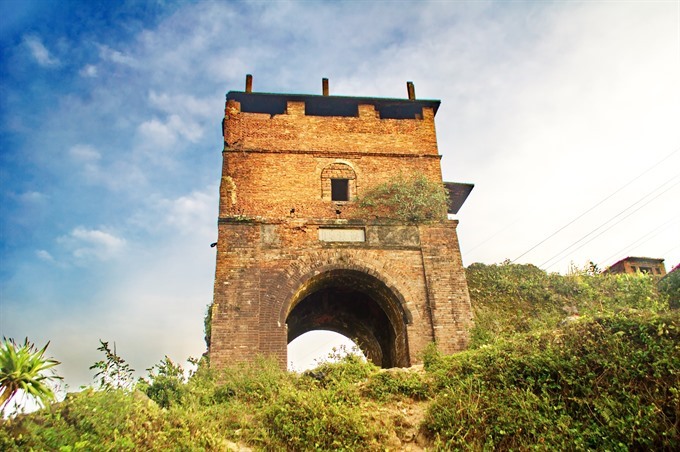 Life & Style
Life & Style

The central localities of Thừa Thiên-Huế and Đà Nẵng on Wednesday signed a memorandum of understanding to clarify their responsibility for conserving the heritage gate Hải Vân Quan, which is located between the two.
 |
| The ruin giant brick gate lying on the top of Hải Vân Pass. VNS File Photo |
THỪA THIÊN-HUẾ — The central localities of Thừa Thiên-Huế and Đà Nẵng on Wednesday signed a memorandum of understanding to clarify their responsibility for conserving the heritage gate Hải Vân Quan, which is located between the two.
The memorandum regulated the localities each would contribution half of the proposed budget for the conservation project of the site, which served as the gate to the capital city of Huế from the south during the Nguyễn dynasty (1802-1945).
Thừa Thiên-Huế will hold the right to grant investment licenses, make investment decisions, authorise agencies and monitor conservation work.
Đà Nẵng will have to approve conservation documents before they are enacted and the city’s Department of Culture and Sports will be a member of a management unit of the site conservation project, which will be formed by Thừa Thiên-Huế.
Last August, the two localities met and agreed a conservation proposal that would restore all relics inside the heritage site landmarks. Hải Vân Quan was recognised as a national heritage site in 2017 after the two localities solved a dispute over the control of the site.
The site is located on the border of Lăng Cô Township in Thừa Thiên-Huế and Hòa Hiệp Bắc Ward in Đà Nẵng. Earlier, the controlling rights dispute between the two sides had left the giant brick gate ruined for almost three decades.
The first gate was built in the Trần era (1226-1400). Later in 1826, the Nguyễn dynasty’s second king Minh Mạng (1820-1841) built a new gate on the same site to mark the border of Huế to the south.
Hải Vân Quan is the giant gate built by bricks on the top of Hải Vân Pass, a mountain cliff clinging from the Trường Sơn Range and pointing to the sea. In the past before the Hải Vân Tunnel was built, the path on Hải Vân Pass was the only road between Thừa Thiên-Huế and Đà Nẵng.
The old giant gate today is a busy tourist site thanks to the spectacular view over the mountain and sea. — VNS




